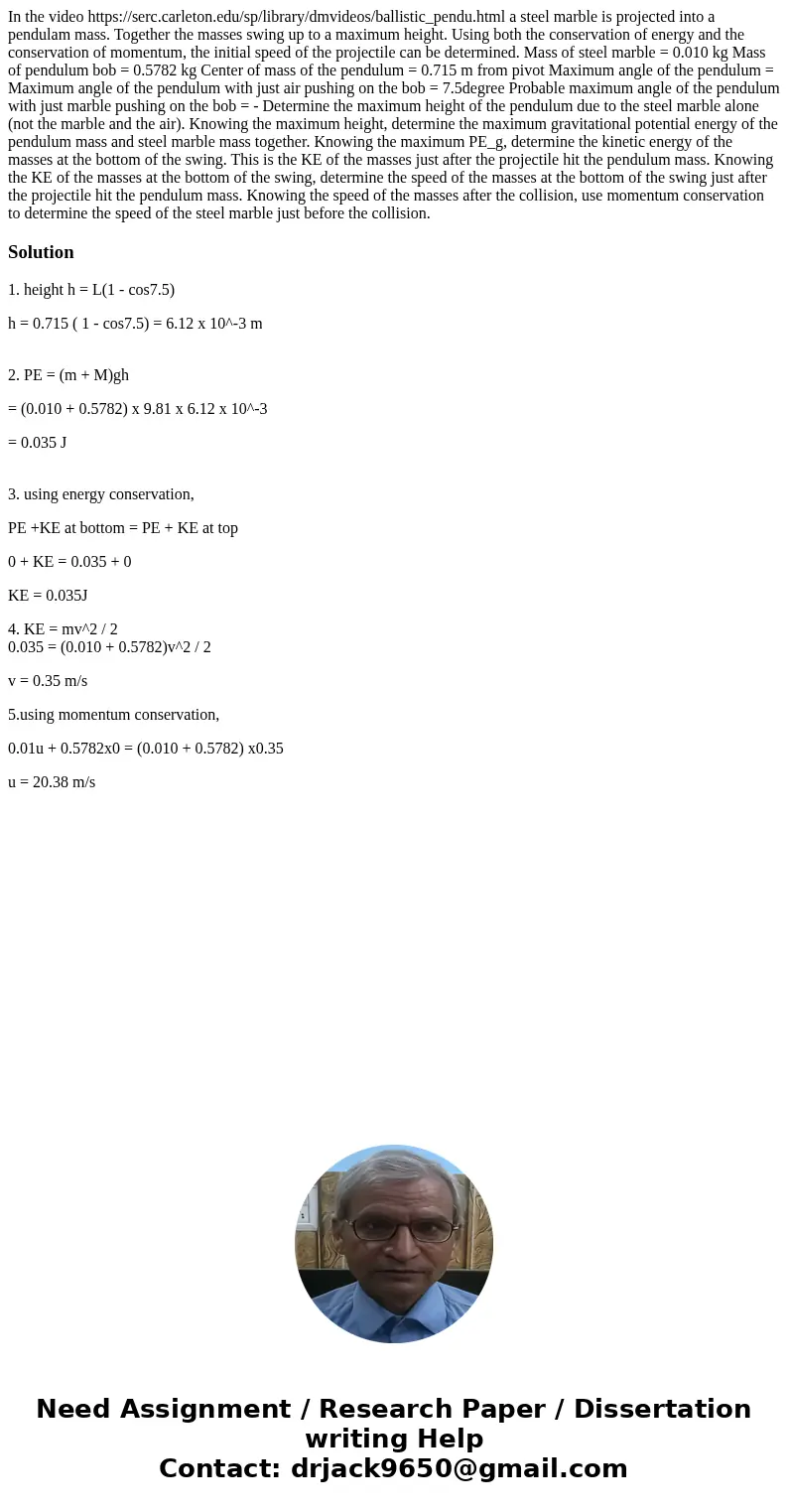In the video httpsserccarletonedusplibrarydmvideosballisticp
In the video https://serc.carleton.edu/sp/library/dmvideos/ballistic_pendu.html a steel marble is projected into a pendulam mass. Together the masses swing up to a maximum height. Using both the conservation of energy and the conservation of momentum, the initial speed of the projectile can be determined. Mass of steel marble = 0.010 kg Mass of pendulum bob = 0.5782 kg Center of mass of the pendulum = 0.715 m from pivot Maximum angle of the pendulum = Maximum angle of the pendulum with just air pushing on the bob = 7.5degree Probable maximum angle of the pendulum with just marble pushing on the bob = - Determine the maximum height of the pendulum due to the steel marble alone (not the marble and the air). Knowing the maximum height, determine the maximum gravitational potential energy of the pendulum mass and steel marble mass together. Knowing the maximum PE_g, determine the kinetic energy of the masses at the bottom of the swing. This is the KE of the masses just after the projectile hit the pendulum mass. Knowing the KE of the masses at the bottom of the swing, determine the speed of the masses at the bottom of the swing just after the projectile hit the pendulum mass. Knowing the speed of the masses after the collision, use momentum conservation to determine the speed of the steel marble just before the collision. 
Solution
1. height h = L(1 - cos7.5)
h = 0.715 ( 1 - cos7.5) = 6.12 x 10^-3 m
2. PE = (m + M)gh
= (0.010 + 0.5782) x 9.81 x 6.12 x 10^-3
= 0.035 J
3. using energy conservation,
PE +KE at bottom = PE + KE at top
0 + KE = 0.035 + 0
KE = 0.035J
4. KE = mv^2 / 2
0.035 = (0.010 + 0.5782)v^2 / 2
v = 0.35 m/s
5.using momentum conservation,
0.01u + 0.5782x0 = (0.010 + 0.5782) x0.35
u = 20.38 m/s

 Homework Sourse
Homework Sourse